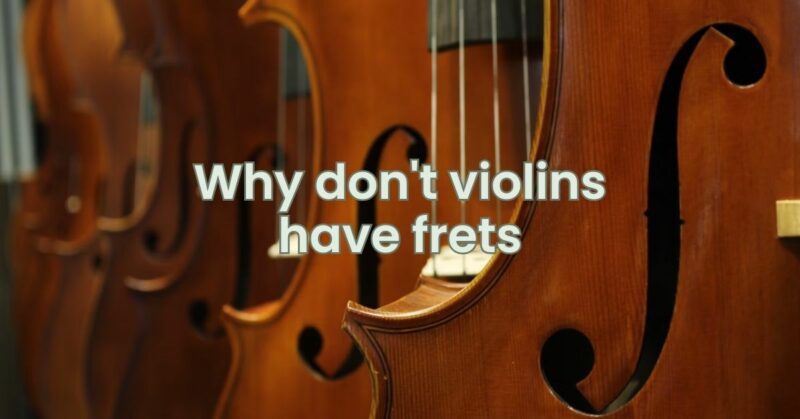The absence of frets on a violin is one of the defining characteristics that sets it apart from fretted instruments like guitars. While frets provide specific advantages, the decision to create a fretless instrument like the violin stems from a unique combination of historical, musical, and technical considerations. In this article, we’ll explore the reasons why violins don’t have frets and how this contributes to the instrument’s distinctive sound and versatility.
The Fretless Nature of Violins
Unlike instruments such as guitars and mandolins, which have metal or wooden frets embedded in the fingerboard to designate specific pitches, violins feature a smooth, unfretted fingerboard. Instead of relying on fixed frets to determine pitch, violinists use their fingers to precisely place the notes on the strings.
1. Versatility of Intonation
The absence of frets grants violinists unparalleled control over intonation. This means that a skilled player can subtly adjust the pitch of each note by minutely altering the placement of their fingers. This flexibility enables vibrato, slides, and other expressive techniques that are integral to the violin’s unique sound.
2. Microtonal Expressiveness
Fretless instruments, like the violin, can achieve microtonal nuances that are virtually impossible on fretted instruments. This capability allows for the creation of rich, emotionally charged melodies that can evoke a wide range of feelings and emotions.
3. Expressive Techniques
The fretless nature of the violin allows for a variety of expressive techniques that shape the instrument’s timbre and character. Techniques like glissando (sliding between notes), portamento (sliding between two pitches), and harmonics are all made possible by the absence of frets.
4. Adaptability to Different Styles
Frets impose limitations on a musician’s ability to play certain notes and intervals with accuracy. By removing frets, the violin becomes incredibly adaptable, making it suitable for various musical genres, from classical to folk, jazz, and contemporary styles.
5. Embracing Challenges
Playing a fretless instrument like the violin requires a higher level of skill and precision. Musicians must develop a keen sense of pitch and intonation through rigorous training and practice. This challenge contributes to the artistry and dedication that violinists bring to their craft.
6. Historical Tradition
The violin’s origins date back to the early Renaissance, a time when frets were not commonly used on stringed instruments. As the violin evolved and gained prominence in various musical contexts, the absence of frets became an integral part of its identity.
7. Complex Sound Palette
The absence of frets allows for a more complex and nuanced sound palette. The continuous range of pitch enables violinists to create intricate melodic lines, harmonies, and chords that contribute to the instrument’s expressive potential.
Conclusion
The decision to create a fretless instrument like the violin goes beyond mere convention. It represents a conscious choice to prioritize versatility, expressiveness, and the mastery of intonation. The absence of frets grants violinists the freedom to explore a world of sonic possibilities, create emotionally charged performances, and communicate stories through music that resonate deeply with audiences across cultures and generations.


